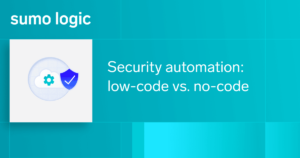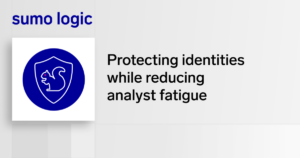In today’s fast-paced cyber threat landscape, it is not a question of IF but WHEN an organization is going to get breached. And in order to prepare in a preemptive manner, organizations should strive to minimize their attackers’ dwell time as much as possible. This is why metrics such as MTTR (Mean time to respond) and MTTD (Mean time to detect) have grown to be highly relevant in the cybersecurity industry.
The reason that these metrics are so important is that they visually represent how good your security team is at detecting and remediating threats. Naturally, you wouldn’t want your attackers to infiltrate your systems for days and weeks before getting caught. By that time, they would have already wreaked havoc and caused irreparable damage.
Rather, you should aim to narrow down your MTTD (Mean Time To Detect) and MTTR (Mean Time To Respond) to mere minutes. And that can only be achieved if your SOC team is equipped with state-of-the-art security solutions, such as SOAR.
The growing importance of MTTD and MTTR
When it comes to resolving incidents, security teams are very well aware that MTTD and MTTR are some of the most important metrics to follow.
Currently, the average dwell time for attackers ranges somewhere around 100-150 days. That’s an average of 3 to 5 months of interrupted breach time attackers have to pose any kind of damage they want into the infiltrated systems. Needless to say, security teams need to step up their game to really bring down their MTTD and MTTR.
But before we delve into the core of MTTD and MTTR, let’s briefly clarify their meaning and role in the cybersecurity industry:
-
Mean Time To Detect (MTTD): Measures the average time it takes for your security team to detect a security threat or incident.
-
Mean Time To Respond (MTTR): Measures the average time it takes for your team to initiate a response and remediate the detected threat or incident.
These metrics are vital for measuring the performance of every SOC team. The time needed to detect, react, and remediate threats is a great indicator of SOC efficiency. And with today’s fast-paced cyber threat landscape becoming more and more complex, speed and efficiency in security operations may just be the two most vital components.
However, it should be pointed out that speed in detection and remediation is nothing without efficiency. So your goal shouldn’t be to rush through alert-checking and threat remediation but to optimize your processes and find the best courses of action applicable to any potential scenario.
Your security team needs to be deeply ingrained into your workflow processes. Their use of technologies should be flawless, and their incident response initiatives need to acquire a proactive stance.
Best strategies to drive down MTTD and MTTR
Improving your security team’s reaction and recuperation time is not just about having the latest technology available. In practice, driving down MTTD and MTTR comes down to applying a series of interconnected techniques, such as:
-
Optimize your incident response plan: Create a well-structured incident response plan that perfectly aligns with your security team and your resources for optimal performance.
-
Have a great understanding of attacks: Study the historical evidence of attacks in your industry, the potential capabilities of your attackers, their resources, behavior, and their means of attacking.
-
Conduct cybersecurity incident simulation exercises: Refer to cybersecurity knowledge hubs, such as MITRE ATT&CK, and prepare your SOC team and all the other departments for every potential outcome by exposing them to simulations of realistic cyber attacks.
-
Leverage progressive automation and security orchestration: These may, in fact, be your most vital assets in improving your MTTD and MTTR. By augmenting your security analysts, they enhance their capabilities and ease the job for them, allowing them to become drastically more efficient.
-
Utilize machine learning to enhance threat hunting processes: Next-Gen SOAR technologies have the capability to study the characteristics of incoming threats and use that knowledge to recommend appropriate courses of action to analysts, thus aiding in the improvement of their threat hunting processes.
It is only when you apply strategies to enhance the knowledge, experience, and skills of your security team that you will be able to see actual results of improving your MTTD and MTTR.
In order to successfully oppose the growing complexity of modern attacks, your SOC team needs to evolve to the same level. This means combining great strategies with impeccable execution plans and leveraging advanced technology in the process.
Your SOC needs to always strive towards perfection in MTTD and MTTR, and their efforts should be backed with some of the most advanced technologies in the industry. One such technology is SOAR.
Equip your SOC team with the right technologies for better MTTD & MTTR
Many SOC teams have to juggle multiple disparate tools and this:
-
Slows down their reaction time to threats
-
Hinders their attack visibility
-
And ultimately leads to poor MTTD and MTTR
However, by incorporating intelligent technologies within your processes that would act as a singular point of reference where all access to data and tools is stored, your security team would be able to make quicker and more efficient decisions.
SOAR (Security Orchestration, Automation and Response), for instance, allows security teams to access all data by connecting disparate technologies into one centralized point of authority. By having visual access to all the data and technologies involved in the processes, SOAR allows security teams to make faster and more efficient decisions regarding potential threats.
Furthermore, SOAR allows your security analysts to use automation and orchestration to automate all time-consuming and repetitive processes and also act as a connective tissue between all technologies, people, and processes within the organization. This drastically improves the MTTR.
When it comes to MTTD, SOAR uses its machine learning prowess and connects it with its progressive automation to add an enhanced layer of threat hunting capabilities to security analysts. SOAR uses its machine learning engine to learn the behaviors of attackers, extract information from incoming threats and uses that knowledge to distinguish between false positives and real threats.
And by discovering real threats and eliminating false positives, SOAR allows analysts to speed up their threat investigation processes, ultimately driving down their MTTD.
So, not only does SOAR improve collaboration within the SOC, it provides your analysts with an effective way to manage all data and technologies from a singular dashboard and improves your SOC’s ability to investigate and remediate threats.
Improve your MTTD and MTTR with SOAR and stay one step ahead of attackers
SOC teams should stop waiting for alerts to kick-start their threat-hunting processes. Attackers are getting smarter and are using more advanced technologies to launch cyber attacks, meaning that their attacks can circumvent security protocols completely undetected.
This is why incorporating a forward-thinking technology such as SOAR will allow your security team to adopt a proactive approach toward incident response. SOAR relies on its automation and orchestration capabilities to bring your SOC team together, connect all data and technologies, and make your security professionals more efficient at what they do.
Learn all about the unique powers of our own Cloud SOAR and the bountiful benefits it can offer to your SOC.



